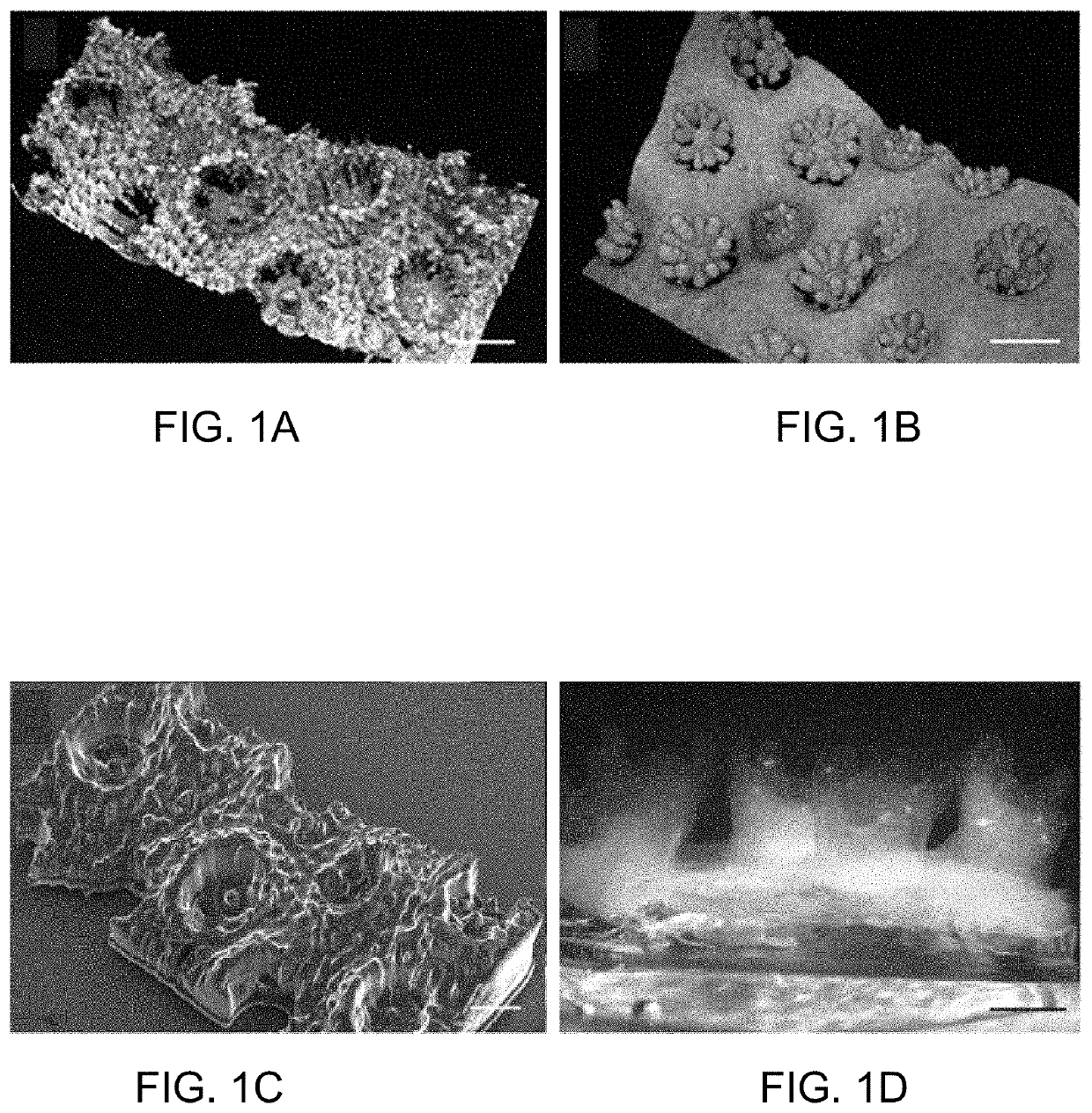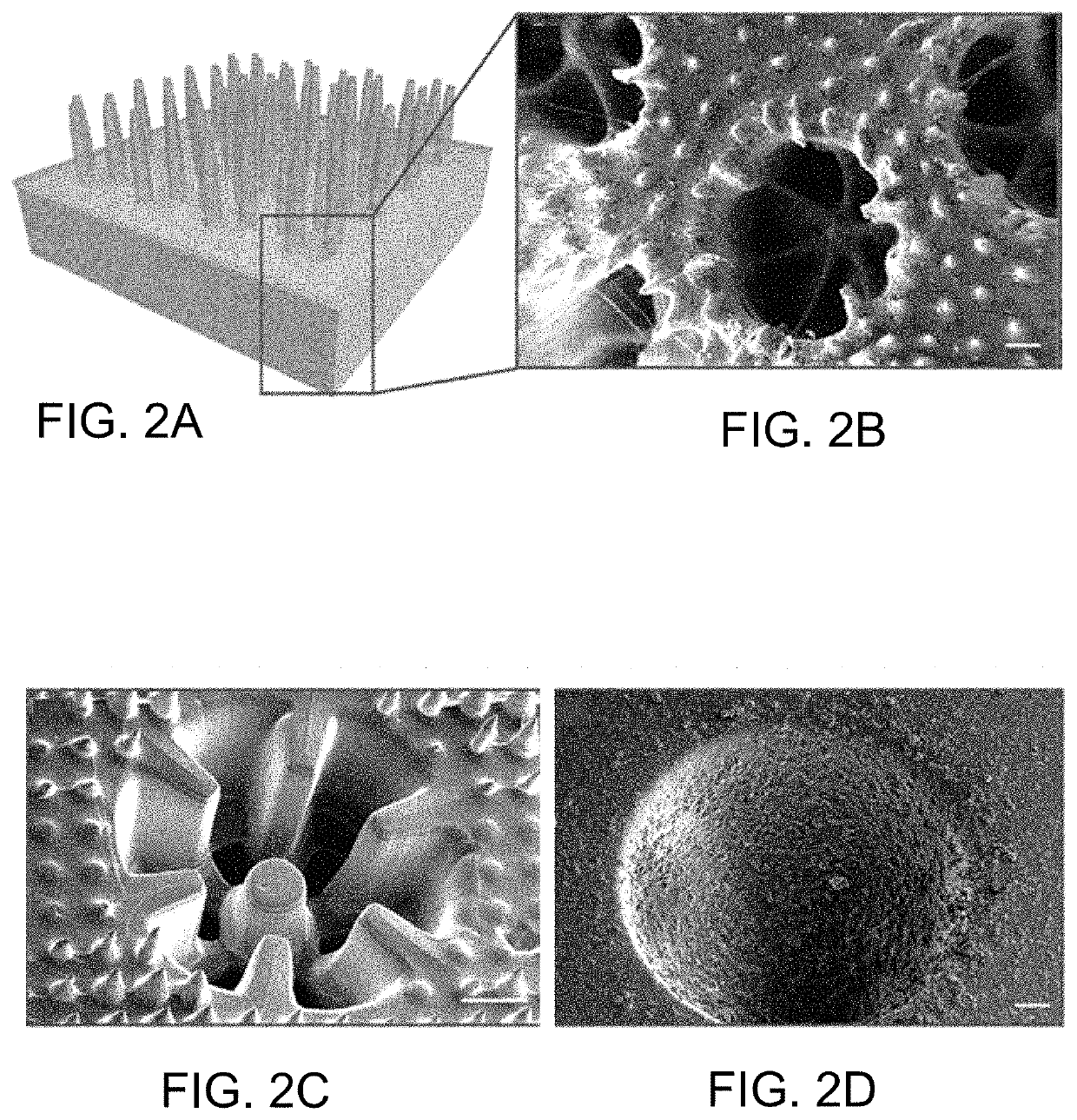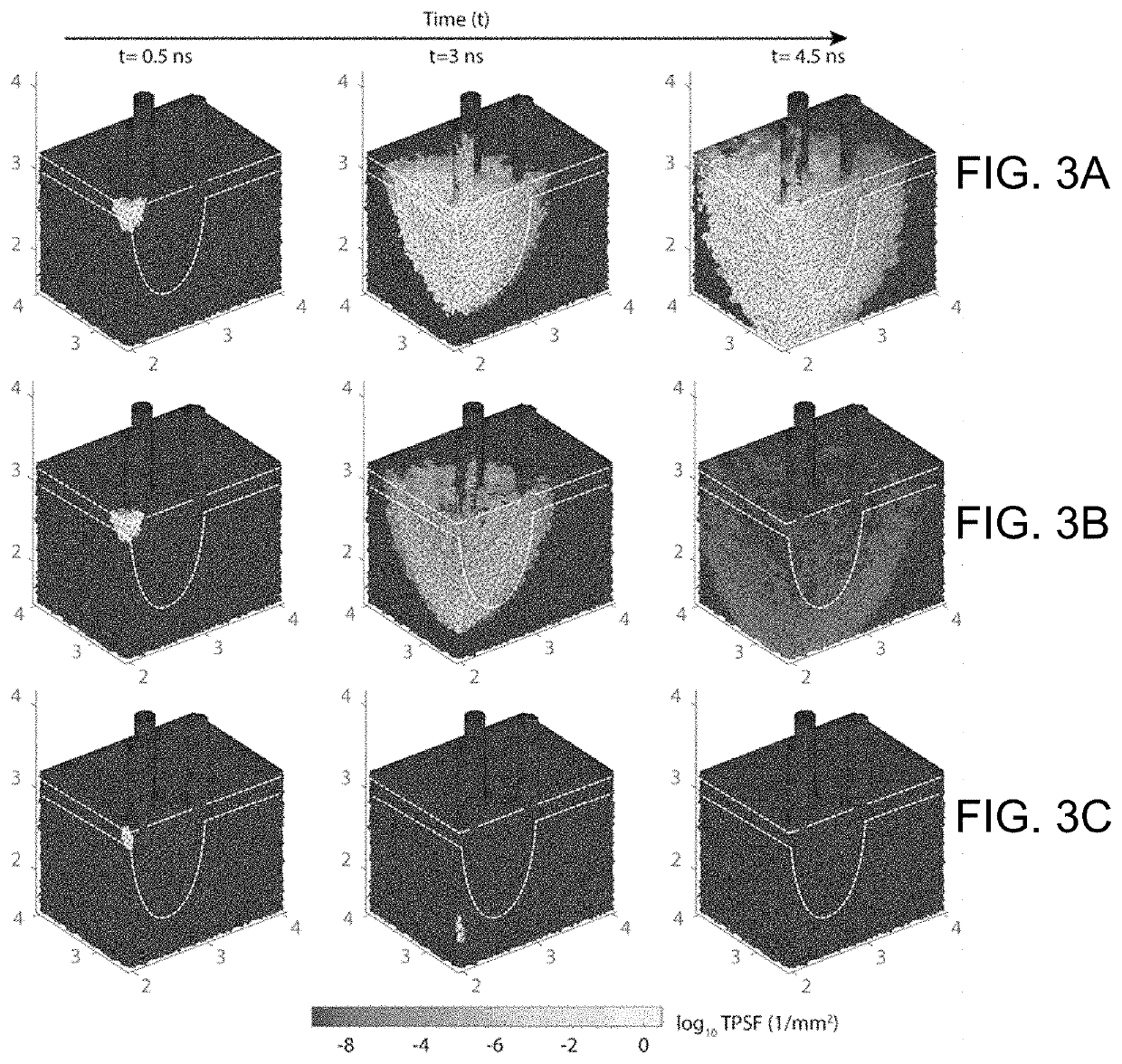Structure and method for promoting microalgae growth
a microalgae and structure technology, applied in the field of structure and method for promoting microalgae growth, can solve the problems of rapid light attenuation due to algal self-shading, coral reefs are dying around the world, and key limiting factors, and achieve the effect of high spatial efficiency of the bionic coral system
- Summary
- Abstract
- Description
- Claims
- Application Information
AI Technical Summary
Benefits of technology
Problems solved by technology
Method used
Image
Examples
Embodiment Construction
[0027]The bioprinting platform employs 3D printing to fabricate optically-tunable photosynthetic matter that mimics coral tissue and skeleton morphology with micron-scale precision (FIGS. 1A-1D). The inventive approach allows replication of any coral architecture, examples of which are shown in FIGS. 7A-7H, providing a variety of design solutions for augmenting light propagation. Fast-growing corals of the family Pocilloporidae are particularly relevant for studying light management. Despite high algal cell densities in their tissues (1×106 cells per cm2 surface area), the internal fluence rate distribution is homogenous, avoiding self-shading of the symbiotic microalgae. The photon distribution is mainly managed by the aragonite skeleton, where light leaks out of the skeleton and into coral tissue, supplying photons deep within the corallite. Additionally, light can enter the coral tissue more easily than it can escape, as low angle upwelling light is trapped by internal reflection...
PUM
| Property | Measurement | Unit |
|---|---|---|
| time- | aaaaa | aaaaa |
| time- | aaaaa | aaaaa |
| time- | aaaaa | aaaaa |
Abstract
Description
Claims
Application Information
 Login to View More
Login to View More - R&D
- Intellectual Property
- Life Sciences
- Materials
- Tech Scout
- Unparalleled Data Quality
- Higher Quality Content
- 60% Fewer Hallucinations
Browse by: Latest US Patents, China's latest patents, Technical Efficacy Thesaurus, Application Domain, Technology Topic, Popular Technical Reports.
© 2025 PatSnap. All rights reserved.Legal|Privacy policy|Modern Slavery Act Transparency Statement|Sitemap|About US| Contact US: help@patsnap.com



